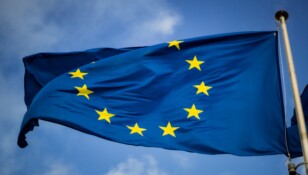At the ECOFIN meeting “Economy and Finance” on 7 December 2021, the finance ministers of the EU member states in the forum agreed on an update of the current VAT regulations. The core issue was the increased application of reduced VAT rates.
On 5 April 2022, this draft was finally agreed and on 6 April 2022, the final EU Directive was published in the EU Official Journal.
These new regulations give governments more flexibility in the application of VAT rates. In total, this concerns 24 revised product categories, primarily from the fields of environment, digitalisation and health. Of these, some are new additions:
- Digital services that were previously not eligible for reduced rates, such as internet access and live-streaming of cultural and sporting events;
- Items that serve to protect public health and that proved crucial in combating the coronavirus pandemic and could also be helpful in future crises, such as personal protective equipment and specific medical equipment, as well as other items that are considered necessary aids for people with disabilities;
- certain items such as bicycles, ecological heating systems and solar panels, which are installed in private households and public buildings and can have a positive impact on EU climate change priorities;
- various items and services deemed appropriate and valuable by the Member States and generally serving public interest objectives.
These updated rules allow the EU Member States to apply a reduced tax rate of up to 5% on the 24 product categories. A tax rate below 5% may be used for only seven of these 24. The aim is to allow the Member States to better recover from the economic burden of the coronavirus pandemic and to invest more in environmental and digital transformation.
In addition to updating the categories, it was decided to abolish by 2030 the possibility for Member States to apply reduced rates and exemptions to goods and services that are considered harmful to the environment and do not promote the EU’s climate change objectives. Furthermore, exemptions and derogations for certain goods and services, which currently apply for historical reasons in certain Member States, can be applied by all countries in the future to ensure equal treatment and avoid distortions of competition. By contrast, exemptions not justified by public interest objectives apart from those supporting EU climate action must be abolished by 2032.
Full details and the listing of all categories (see Annex Three) can be found in the official ECOFIN proposal.
This new kind of flexibility was met with high approval from the participants of the Forum. Thus, 21 of the 27 EU member states voted in favour.
„The unanimous agreement on modernising the VAT rates’ rules is wonderful news. It is the result of a marathon negotiation, and it shows: Where there is a will, there is a way – a European way forward. Member States will have more flexibility to design their VAT systems according to national policy priorities. At the same time, coherence with common European priorities – the ecological and digital transformation and, of course, the protection of public health – is preserved.“
The EU’s Economic and Financial Affairs Council (ECOFIN) adopted the European Union’s new VAT Directive on 5 April.
The draft was submitted in advance to the European Parliament with its final text. Once formally adopted by the Member States, the legislation will enter into force 20 days after its publication in the Official Journal of the European Union, allowing the Member States to apply the new system from that date.
National legislators now have the scope to apply a further reduced rate of between 0 and 5% in addition to the minimum standard rate of 12%, the two reduced rates currently allowed of at least 5% and the exemption with right of deduction.
To prevent an increase in reduced VAT rates which are an exception to the standard rate, Member States may only apply reduced VAT rates to a limited number of the goods and services listed in Annex III to the VAT Directive.







